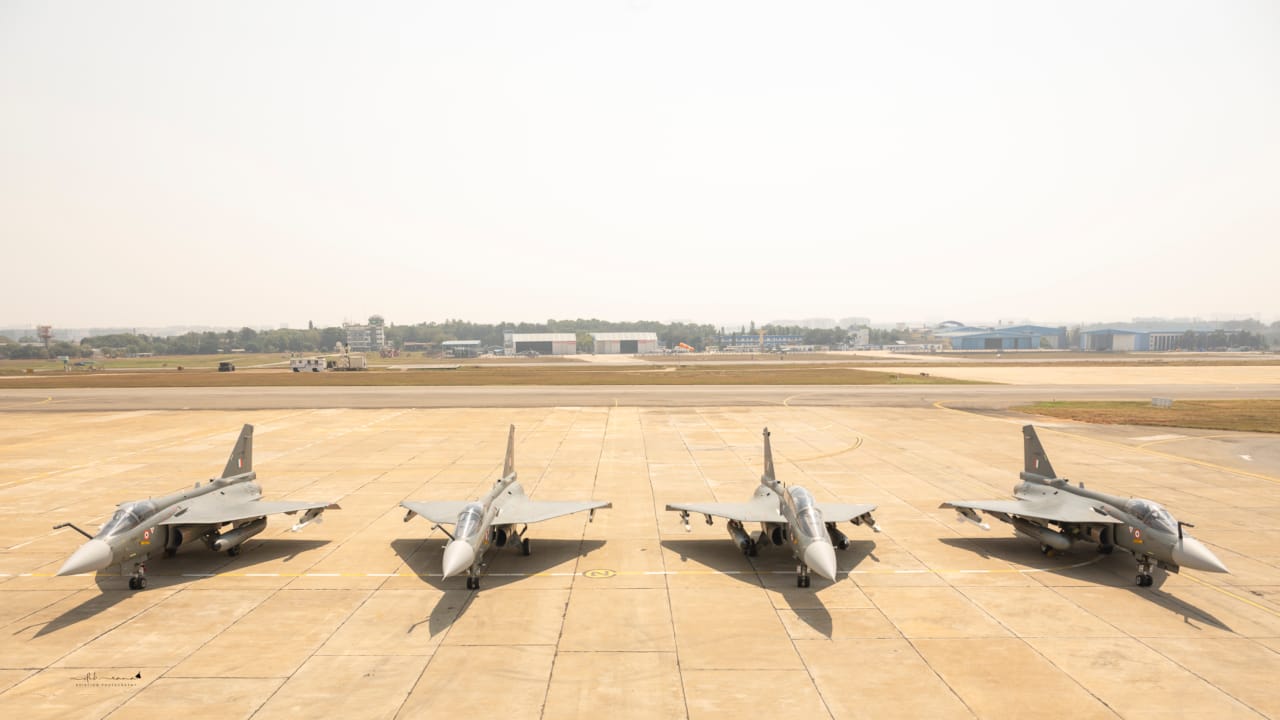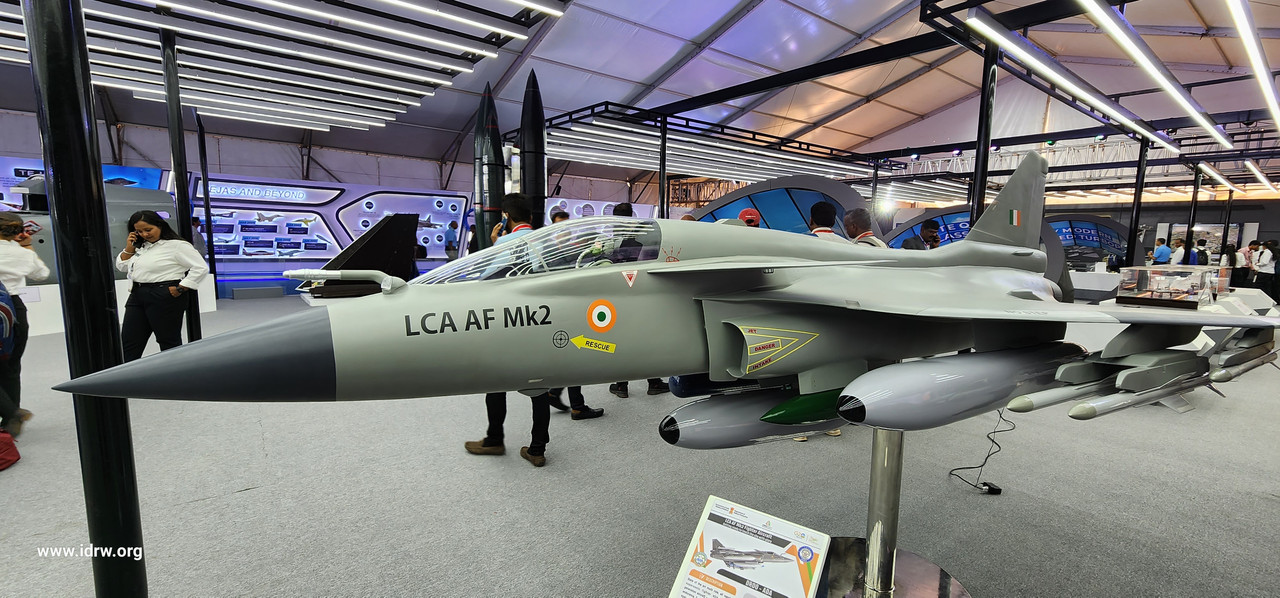SOURCE: AFI


In a significant milestone for India’s aerospace sector, Boeing India has announced that Tata Boeing Aerospace Limited (TBAL) in Hyderabad has successfully completed the delivery of the 300th AH-64 Apache fuselage. This achievement underscores TBAL’s pivotal role as a global sole-source supplier for the fuselages of the world-renowned AH-64 Apache attack helicopters, a vital asset for numerous defense forces around the globe.
The delivery of the 300th fuselage highlights the remarkable progress made by TBAL, which has been a key player in Boeing’s supply chain for the Apache program. The 100th fuselage delivery took place in July 2021, marking a milestone of its own. Since then, the production rate has accelerated, with 200 fuselages delivered in just 42 months. This represents an impressive rate of nearly 60 fuselages per year, reflecting the growing efficiency and capacity of the Hyderabad-based facility.
Continue readingSOURCE: AFI


In a significant advancement in military technology, the Indian Institute of Technology Kanpur (IIT-Kanpur) has transferred the technology (ToT) of its patented Metamaterial Surface Cloaking System, named ‘An?lak?hya’, to a private vendor. This development opens new horizons for stealth applications, not just for aircraft but also for infrastructure like hardened shelters.
Developed by IIT-Kanpur, this system utilizes metamaterials, which are engineered to have properties not found in nature, to manipulate electromagnetic waves, including visible light, radar, and infrared. This can theoretically render objects invisible or significantly less detectable to various surveillance methods.
Continue readingSOURCE: RAUNAK KUNDE / NEWS BEAT / IDRW.ORG


In discussion with idrw.org at Aero India 2025, DRDO (Defence Research and Development Organisation) officials have confirmed that the design phase for the Virupaksha Active Electronically Scanned Array (AESA) Radar for the Su-30MKI fighter jet has now been completed. The program is moving forward, with the next step being the commencement of sub-system realization. Once this phase is complete, the prototype of the radar will be manufactured, and testing will follow—initially starting with ground-level tests before progressing to in-flight trials.
The Virupaksha AESA Radar, designed specifically for the Su-30MKI, represents a significant technological leap for India’s fighter jet radar systems. One of the most exciting features of the radar is its use of Gallium Nitride (GaN)-based Transmit/Receive Modules (TRM). GaN technology is known for its superior efficiency, power handling, and thermal performance, making it an ideal choice for advanced radar systems.
Continue readingSOURCE: RAUNAK KUNDE / NEWS BEAT / IDRW.ORG


At Aero India 2025, Bengaluru-based NewSpace Research & Technologies Pvt Ltd has unveiled its innovative SHESHNAAG Swarming Systems, which have garnered significant attention for their advanced capabilities in autonomous and semi-autonomous warfare. The company showcased four different models of the SHESHNAAG, with the standout being the SHESHNAAG 150, a long-range collaborative attack swarm system that promises to redefine modern combat strategies.
The SHESHNAAG series represents a cutting-edge approach to swarming warfare, where a group of small, agile, and highly autonomous systems work together to achieve complex, high-impact missions. SHESHNAAG 150, in particular, is described by the company as a long-range collaborative attack swarm designed to deliver devastating results by overwhelming enemy defenses.
Continue readingSOURCE: RAUNAK KUNDE / NEWS BEAT / IDRW.ORG


At Aero India 2025, Hyderabad-based Vem Technologies Private Limited showcased its innovative VIDHVANS Guided Rocket, which promises to revolutionize precision strike capabilities for the Indian Army. The VIDHVANS, a guided rocket system, has been designed to target key enemy infrastructure with a remarkable range of 250 km, providing the ability to neutralize critical military assets deep within enemy territory.
The VIDHVANS is particularly designed for targeting land-based infrastructure such as bunkers, radar installations, air hangars, and runway denial. This makes it an effective tool for both offensive and defensive operations, especially in disrupting enemy logistics and air operations. By providing a precise strike capability at 250 km, VIDHVANS can deliver devastating results against critical infrastructure deep within adversary territory, while minimizing the risk to friendly forces.
Continue readingSOURCE: AFI


At Aero India 2025, Hindustan Aeronautics Limited (HAL) showcased its groundbreaking CATS Warrior Loyal Wingman, a cutting-edge unmanned aerial system (UAS) designed to work in tandem with manned aircraft for deep strike missions. With notable advancements in both size and capabilities, the CATS Warrior represents a significant leap in India’s defense technology, providing a versatile solution for modern aerial combat and mission planning.
One of the most significant updates to the Warrior’s design is its increased maximum take-off weight (MTOW), which now exceeds 2 tons—substantially higher than the previous MTOW of around 1,300 kg. This increase in weight allows the Warrior to carry more substantial payloads, enhancing its operational capabilities and mission flexibility.
Continue readingSOURCE: AFI


At the ongoing Aero India 2025, the Light Combat Aircraft (LCA) Mk1A made a spectacular appearance, showcasing its advanced capabilities and potential for the Indian Air Force (IAF). The event saw four LCA Mk1A aircraft fly in a stunning ‘finger four’ formation, aptly named the Yodha Formation, drawing gasps of awe from the crowd. This captivating aerial display was a highlight of the program, as the second prototype of the LCA Mk1A took to the skies, leaving a lasting impression on all those present, including the esteemed Raksha Mantri.
The LCA Mk1A (Alpha) is a major leap forward in India’s defense aviation, representing an upgraded and more capable version of the aircraft. It incorporates a new suite of advanced sensors, a cutting-edge Mission & Digital Flight Control System, and a variety of enhanced weapons systems. These include the integration of the Astra Beyond Visual Range (BVR) missile, as well as precision-guided munitions, all contributing to the aircraft’s heightened combat effectiveness. Furthermore, the Mk1A is equipped with net-centric warfare capabilities, providing the Indian Air Force with an unmatched strategic edge in modern warfare.
Continue readingSOURCE: AFI


At the prestigious Aero India 2025, Hindustan Aeronautics Limited (HAL) revealed that the Hindustan Jet Trainer (HJT-36), a critical aircraft in the Indian Air Force’s training fleet, has undergone extensive modifications and has now been officially renamed ‘Yashas’. The new name was unveiled by Shri Sanjeev Kumar, Secretary (Department of Defence Production), in the presence of Dr. D.K. Sunil, Chairman & Managing Director of HAL, and other senior officials.
The HJT-36, originally designed as an intermediate trainer aircraft, has undergone significant changes aimed at enhancing its departure characteristics and spin resistance across the entire flight envelope. These improvements were made after comprehensive testing, ensuring the aircraft’s enhanced safety, performance, and suitability as a training platform for future military pilots. The upgrades to the aircraft address vital aspects of its handling and stability, making it a modern, highly capable training tool for the evolving needs of military aviation.
Continue readingSOURCE: AFI


In a recent development, China has raised concerns regarding the depiction of territorial boundaries in two Bangladeshi textbooks and a map of Asia displayed on the website of the Department of Survey. According to Beijing, the depiction of Arunachal Pradesh and Aksai Chin as part of India in the materials constitutes a “factual discrepancy,” with China asserting that both regions are historically part of Chinese territory.
Additionally, China has objected to the portrayal of Hong Kong and Taiwan as separate entities from China in the textbooks and the survey department’s website, insisting that both territories should be recognized as integral parts of China. These objections have prompted a diplomatic exchange between China and Bangladesh, with the latter seeking to address the issue in a more coordinated manner at a later stage.
Continue readingSOURCE: IDRW.ORG


In a groundbreaking reveal at Aero India 2025, the Indian defense startup Tonbo Imaging is set to introduce Wavestrike, a High Power Microwave (HPM) based Directed Energy Weapon (DEW). This innovative system is designed to offer new strategic capabilities in electronic warfare, showcasing India’s advancements in defense technology.
Wavestrike utilizes HPM to disrupt or disable electronic systems, offering a non-lethal option for neutralizing threats. This can range from jamming communications to disabling UAVs or other electronic devices over a significant area.
Continue readingSOURCE: IDRW.ORG


In a move that underscores India’s growing self-reliance in defense manufacturing, Rajnath Singh, India’s Defence Minister, visited the Hindustan Aeronautics Limited (HAL)’s state-of-the-art LCAMK1A production facility in Bengaluru today. This visit marks a significant milestone in India’s indigenous defense capabilities, as the country inches closer to meeting the requirements of the Indian Air Force (IAF) and enhancing its aerial defense systems.
During the visit, Rajnath Singh was shown seven newly built aircraft at different stages of production. These included three LCA MK1A fighter jets, two trainer variants, and two aircraft in the final stages of testing. The event highlights the rapid strides India has made in building advanced fighter jets with indigenous technologies.
Continue readingSOURCE: AFI


At the pre-Aero India 2025 conference, Aeronautical Development Agency (ADA) officials revealed critical updates regarding the Tejas MkII program, offering a glimpse into the aircraft’s production timeline and developmental plans. According to the latest details, the Tejas MkII is on track to enter production by late 2028 or early 2029, with a projected order for 120 units to be completed by 2035 or early 2036.
Once the Tejas MkII is fully cleared for production, ADA officials anticipate a production rate of approximately 18 units per year. This rate will likely increase as the production process matures and the required infrastructure is set up. The planned production ramp-up will enable the Indian Air Force (IAF) to gradually phase in the aircraft into its fleet, reinforcing India’s military airpower and reducing its dependence on foreign aircraft.
Continue readingSOURCE: AFI


At the Aero India 2025 event, US officials have clarified their stance on potential military sales to India, particularly concerning the Medium Multi-Role Fighter Aircraft (MRFA) deal. According to a report by idrw.org, the United States is not currently planning to offer the F-35 Lightning II in the MRFA procurement, which also involves Transfer of Technology (ToT). Instead, the options on the table for India are the F-15EX Eagle II and the F-21, a variant of the F-16 Fighting Falcon tailored for the Indian market.
During discussions with idrw.org staff, it was elucidated that while the F-35 is not part of the initial offerings, there’s a pathway for India’s request to be considered under a Government-to-Government (G2G) deal. However, this would not guarantee the transaction. The US officials mentioned that if India formally requests the F-35, the matter would be taken up for further discussion, potentially leading to negotiations, but there is no assurance that such a deal would be finalized.
Continue readingSOURCE: AFI


The skies above Bengaluru are set to host an unprecedented display at Aero India 2025, where the Russian Su-57 and the American F-35 Lightning II are both showcasing their capabilities. Amidst this backdrop, Sergey Bogdan, a Hero of Russia and a seasoned test pilot, has stirred the aviation community with his insights into a hypothetical dogfight between these two fifth-generation fighters.
Bogdan emphasized the Su-57’s superior maneuverability, particularly its ability to perform complex aerial maneuvers thanks to its advanced thrust vectoring technology. He noted that in close quarters, the Su-57’s agility could give it an edge over the F-35, which is designed more as a strike fighter with less emphasis on dogfighting.
Continue readingSOURCE: RAUNAK KUNDE / NEWS BEAT / IDRW.ORG


In a groundbreaking move for India’s defense innovation, Bengaluru-based NewSpace Research & Technologies (NRT) has been tasked with developing the Naval Collaborative Combat Air Vehicle (N-CCAV), a project that aims to integrate unmanned aerial systems with the Indian Navy’s fighter jets.
The N-CCAV will be built upon NRT’s innovative “Abhimanyu” concept, a jet-powered, low Radar Cross Section (RCS) design intended to serve as a loyal wingman to the Navy’s MiG-29K and the forthcoming Rafale-M aircraft. This development marks a significant step towards enhancing the operational capabilities of the Indian Navy through advanced human-machine teaming.
Continue reading